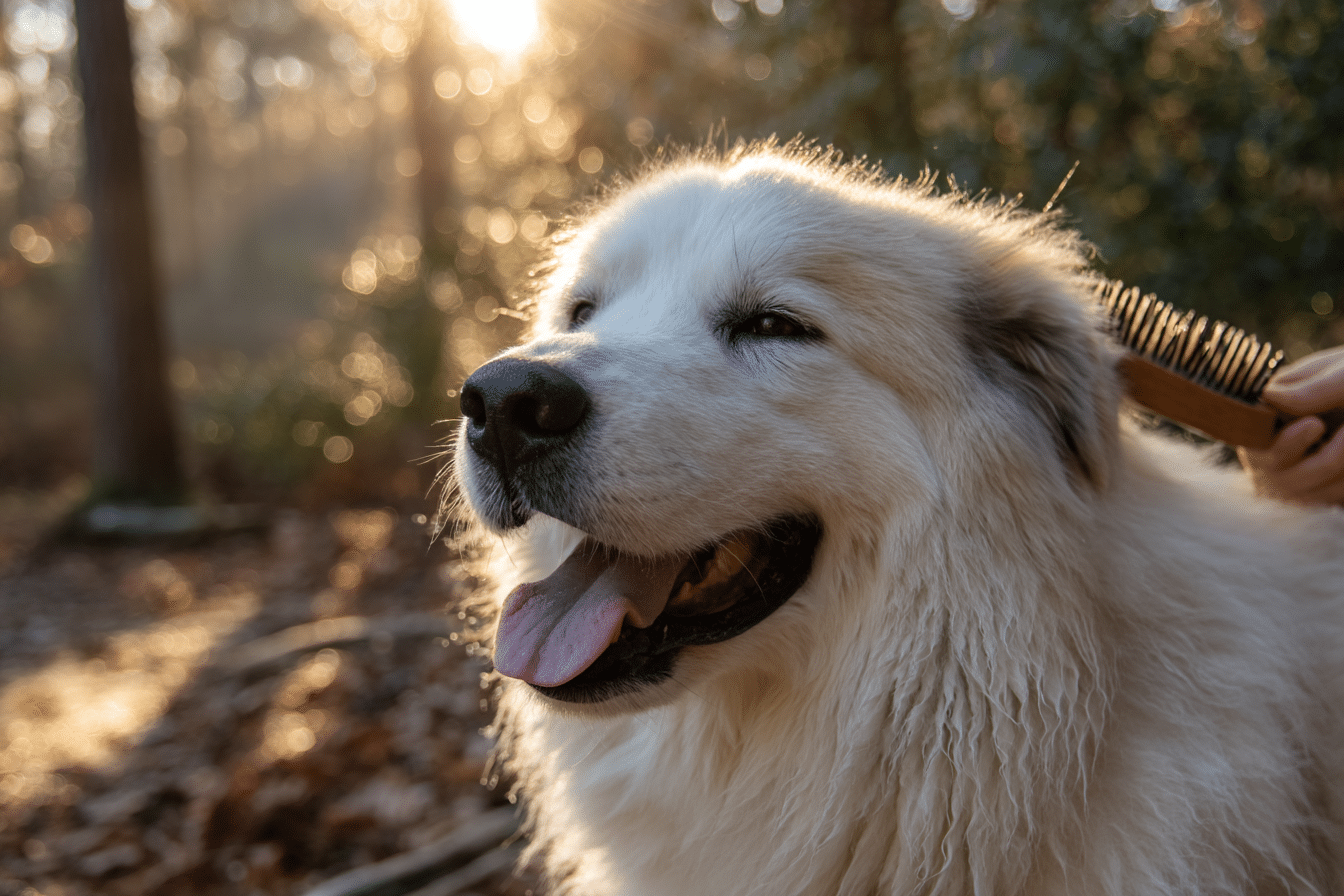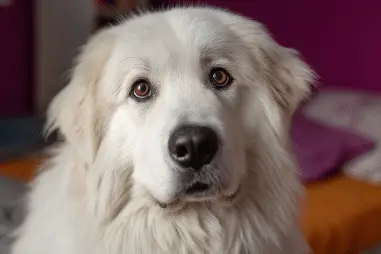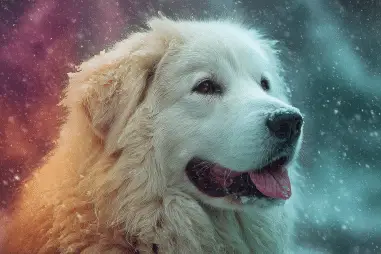The Great Pyrenees is a striking, majestic breed known for its thick, lush double coat that not only gives it a beautiful appearance but also protects it from harsh weather. However, maintaining that coat requires consistent grooming to keep your dog comfortable, healthy, and looking their best year-round. Whether you’re a new Great Pyrenees owner or looking to improve your grooming routine, this guide will provide you with all the essential tips, tools, and techniques to care for your fluffy companion.
Why Regular Grooming Is Essential for Great Pyrenees
Regular grooming is more than just a cosmetic routine for your Great Pyrenees—it’s a key part of their overall health and well-being. Because of their heavy double coat, dirt, debris, and mats can easily become trapped, leading to skin irritations and infections if left unchecked. Moreover, grooming helps to reduce shedding and distribute natural oils across the coat, promoting a healthy shine and texture.
Frequent grooming sessions also give you a chance to check for any unusual lumps, bumps, or parasites such as ticks and fleas. Early detection of skin issues can save you trips to the vet and provide quicker relief for your furry friend. Most importantly, grooming is a bonding experience that strengthens trust and comfort between you and your Great Pyrenees.
Understanding the Double Coat: Undercoat and Outer Coat
The Great Pyrenees’ distinctive double coat consists of two layers:
- Undercoat: This soft, dense layer provides insulation against cold weather. It tends to shed heavily, especially during seasonal changes in spring and fall.
- Outer coat: The longer and coarser outer coat protects from moisture, dirt, and injury. It has a water-resistant quality that keeps your dog dry and comfortable.
Knowing the difference between these two layers is crucial when grooming, as it guides how you brush and care for your dog’s fur. While the outer coat is more resistant to tangling, the undercoat can easily mat if not groomed regularly. You’ll want to focus on removing loose undercoat hair while being gentle enough not to damage the protective outer coat.
Recommended Grooming Tools for Your Great Pyrenees
Having the right tools will make grooming significantly easier and more effective. Here’s a list of must-have grooming tools for your Great Pyrenees:
- Slicker Brush: Perfect for removing loose hair and preventing mats in the undercoat.
- Undercoat Rake: Helps to reach deeper layers of the thick fur and pull out dead undercoat hair.
- Pin Brush: Ideal for smoothing and finishing the outer coat without causing damage.
- Comb: Use a wide-toothed comb to work through tangles and small mats gently.
- Dematting Tool: Helpful for carefully breaking up stubborn mats when necessary.
- Nail Clippers or Grinder: For maintaining nail length and preventing discomfort.
- Ear Cleaner and Cotton Balls: Keep ears clean to avoid infections.
- Dog Toothbrush and Toothpaste: Essential for dental health and fresh breath.
- Quality Dog Shampoo and Conditioner: Use gentle, moisturizing formulas suitable for thick coats.
Step-by-Step Grooming Routine for Your Great Pyrenees
Establishing a consistent grooming routine helps keep your Great Pyrenees looking and feeling great. Aim to groom your dog at least once a week, with more frequent attention during shedding seasons.
1. Brushing
Start your session by brushing your dog’s coat thoroughly. Use the undercoat rake first to remove loose fur from the undercoat. Be methodical, working in sections, and avoid rushing to prevent discomfort. Follow with the slicker brush to remove any remaining loose hairs and break up small mats. Then, use the pin brush to smooth and finish the outer coat.
2. Dealing with Mats
If you encounter mats, gently use a dematting tool or your fingers to loosen them. Don’t pull harshly, as this can hurt your dog and damage the coat. For severe mats that can’t be removed safely, consult a professional groomer to avoid injury.
3. Bathing
Great Pyrenees don’t need frequent baths—approximately every two to three months or when they get particularly dirty is sufficient. Use lukewarm water and a dog-specific shampoo that won’t strip natural oils. Gently massage the shampoo into the coat, focusing on dirtier areas. Follow with a conditioner to keep the fur soft and hydrated. Thoroughly rinse to prevent residue, which can irritate the skin. After bathing, towel dry and, if your dog tolerates it, use a blow dryer on the lowest heat setting to speed drying and prevent dampness that leads to odor or skin problems.
4. Nail Trimming
Trim your Great Pyrenees’ nails regularly to prevent overgrowth, which can cause pain and postural problems. Use proper dog nail clippers or a grinder, and if you’re inexperienced, seek guidance or professional help due to the quick (the sensitive part inside the nail).
5. Ear Cleaning
Inspect your dog’s ears weekly for dirt, wax buildup, and signs of infection such as redness or odor. Clean gently with a vet-approved ear cleaner and cotton balls, avoiding cotton swabs that can damage the ear canal.
6. Dental Hygiene
Brush your Great Pyrenees’ teeth a few times a week with dog-safe toothpaste to reduce tartar buildup and maintain fresh breath. Regular dental care can help prevent more serious oral health issues down the line.
Managing Shedding and Seasonal Coat Changes
Great Pyrenees are heavy shedders—particularly during spring and fall when they “blow” their coats to adjust to changing temperatures. During these times, you’ll need to ramp up brushing to manage the excess fur and prevent mats from forming.
Daily brushing with an undercoat rake and a slicker brush during peak shedding season will help keep your home cleaner and your dog more comfortable. Additionally, ensure your dog’s diet supports healthy skin and coat, as proper nutrition can reduce excessive shedding.
If you notice clumps of shedding hair hanging in the coat that are difficult to remove, a visit to a professional groomer for a deshedding treatment might be necessary.
Tips for Making Grooming Positive and Stress-Free
Building a positive grooming experience is key to your Great Pyrenees being cooperative and relaxed during sessions. Here are some tips to keep grooming enjoyable:
- Start grooming when your dog is calm, perhaps after a walk or playtime.
- Use treats and praise liberally to reward good behavior.
- Keep sessions short and break them into smaller parts if your dog becomes restless.
- Use gentle, slow movements and avoid forcing any part of the process.
- Introduce grooming tools gradually to get your dog accustomed to their feel and sound.
- If grooming tasks become overwhelming, enlist the help of a professional groomer experienced with Great Pyrenees.
By creating a low-stress grooming routine, you help your dog feel safe and cared for, making them more willing to cooperate now and in the future.
Keep Your Great Pyrenees Looking Their Best All Year
Grooming your Great Pyrenees is a vital part of their care routine that benefits both their health and your bond together. By understanding their unique double coat, equipping yourself with the right tools, and following a thorough grooming regimen, you’ll keep your majestic companion looking and feeling wonderful all year long. Remember, patience, consistency, and a gentle approach go a long way in making grooming a positive experience for you and your furry friend.







